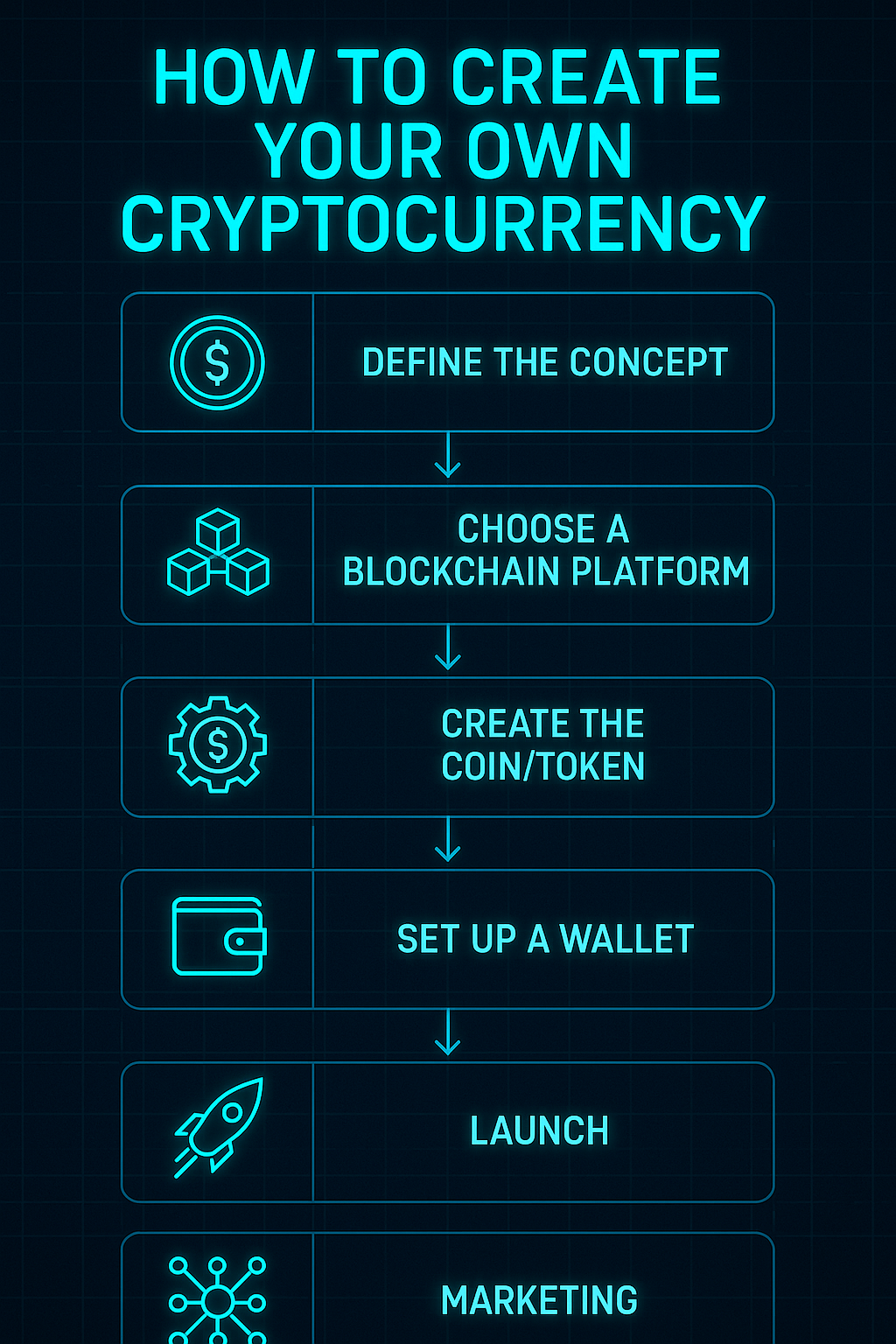Cryptocurrency has changed from a small idea to a big money tool. Bitcoin and Ethereum grab the headlines, but many people and companies want to make their own digital money. If you’re interested in how to build your own cryptocurrency, this guide will show you the steps in simple words.
Understanding Cryptocurrency
What is Cryptocurrency?
Cryptocurrency is a type of digital or virtual money that uses code to stay safe. Unlike regular money from governments, cryptocurrencies work on spread-out networks using blockchain technology—a shared record kept by many computers, or nodes.
Step 1: Define Your Purpose
Why Do You Want to Create a Cryptocurrency?
Before we get into the technical stuff, let’s figure out why you want to create a cryptocurrency. Are you trying to:
- Make transactions easier for a specific group?
- Start a new platform or service?
- Build a token for a decentralized app (dApp)?
Knowing what you want to achieve will help shape how your cryptocurrency works and what it looks like.
Step 2: Pick the Right Blockchain Platform
Laying the Groundwork for Your Cryptocurrency
Based on your tech skills and what you want to do, you can:
- Build a new blockchain: This gives you total control but needs deep tech know-how.
- Fork an existing blockchain: Change the code of a blockchain that’s already out there, like Bitcoin or Ethereum.
- Create a token on an existing blockchain: Use platforms such as Ethereum (ERC-20), Binance Smart Chain (BEP-20), or Solana to make tokens without having to build a new blockchain.
If you’re just starting out, making a token on an existing blockchain is your best bet.
Step 3: Design Your Cryptocurrency
Key Elements to Think About
As you design your cryptocurrency, keep these things in mind:
- Name and Symbol: Pick a catchy name and symbol that sticks in people’s minds.
- Total Supply: Figure out how many coins you’ll make available.
- Decimals: Choose how small each unit can be divided.
- Consensus Mechanism: Decide on a method to check transactions (like Proof of Work or Proof of Stake).
- Extra Features: Think about whether your token can be created, destroyed, or have other special functions.
Step 4: Create and Launch Smart Contracts
Bringing Your Digital Currency to Reality
Smart contracts are agreements that run themselves with rules written straight into the code. They control how your cryptocurrency works. You can:
- Create your own smart contract: You need coding skills in languages such as Solidity to do this.
- Use tools to make tokens: Sites like TokenMint or Bitbond’s Token Tool let you create tokens without writing code.
Make sure to test on testnets before you launch on the main network.
Step 5: Follow Legal Rules
Understanding the Rules in Different Places
Crypto laws are different in each country. You must:
- Talk to lawyers: Learn about the legal needs in your area.
- Follow the rules: Make sure your cryptocurrency obeys laws about securities, taxes, and stopping money laundering.
Step 6: Spread the Word About Your Cryptocurrency
Getting People to Know and Use It
After you launch, focus on:
- Creating a website and whitepaper: Explain your cryptocurrency’s purpose and how it works in simple terms.
- Engaging with the community: Build a user base through social media, forums, and events.
- Listing on exchanges: Get your cryptocurrency listed on platforms to make it easier to access.
